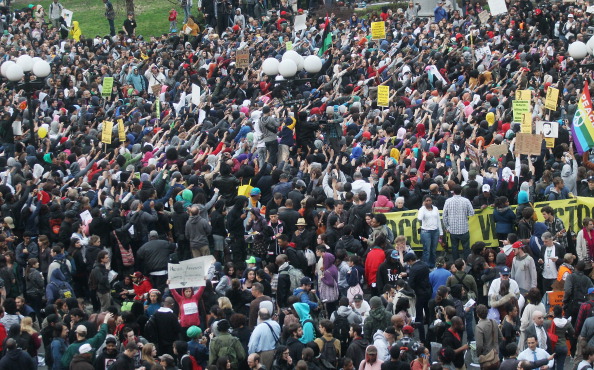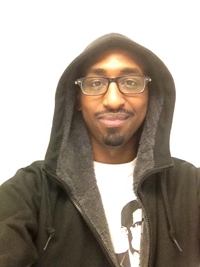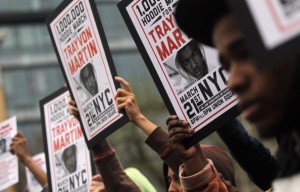Trayvon Martin And How ‘A Million Hoodies’ Began

Mario Tama / Getty Images
Supporters of Trayvon Martin rally in Union Square during a "Million Hoodie March" in Manhattan on March 21
The case of Trayvon Martin, a black teenager shot and killed Feb. 26 by a Neighborhood Watch volunteer in Sanford, Fla., has captured the nation’s attention. The shooter, George Zimmerman, claims self-defense and hasn’t been charged with a crime.
“This guy looks like he’s up to no good, or on drugs or something,” Zimmerman told a 911 dispatcher, adding that Martin was wearing “a dark hoodie, like a gray hoodie.” Moments later, Zimmerman shot an unarmed Martin in the chest, and claimed it was in self-defense.

Daniel Maree, 24, started the Million Hoodies for Trayvon Martin rally and social media campaign.
Federal authorities said Monday that they would take over* join the investigation. The announcement came on the same day that Daniel Maree, a 24-year-old digital strategist in New York City, wrote a blog post and uploaded a YouTube video, pushing for Zimmerman to be charged. Maree asked people to post photos of themselves wearing hoodies with the hashtag #millionhoodies, sign a petition calling for Zimmerman’s prosecution and for New Yorkers to march on Union Square Wednesday. The Million Hoodies for Trayvon Martin movement is now spreading to other cities, including D.C. (Disclosure: Maree used to be my neighbor and we’ve hung out a few times).
The Martin case resonated with Maree on a number of levels. He grew up in South Africa where “as a black person you feel like you’re at home” since the country is majority-black, Maree said.
“When you come to the States, when I came, it was kind of surprising. You actually do feel like a minority, because you are one. That feeling is tangible,” Maree said. “And then to have situations like this, which happened to Trayvon Martin, it shows it’s not just a feeling that we’re imagining. It’s real.”
Maree also spent some time in Florida as a kid, and lived there for two years before relocating to D.C. for college. In Florida, he remembered “coming home late at night sometimes and being stopped by the police for no other reason than for being a young African American in a gated community,” he said. When he heard about the Martin case, Maree said, “I immediately thought, ‘This could be me. This could be my little sister [who still lives in Florida].’ And, to me, that felt totally unacceptable.”

Mario Tama / Getty Images
Supporters of Trayvon Martin rally in Union Square during a "Million Hoodie March" in Manhattan on March 21.
Such sentiments have been articulated by many others in recent days, including in pieces published in The New York Times and GOOD, and in one that aired on MSNBC.
The case has spurred a national conversation and people from around the world began posting hoodie photos Wednesday. Maree said some of the most powerful images have been photographs parents have taken of their young children in hoodies. Hundreds of people showed up for the New York rally Wednesday, including the Martin family. Another rally will take place on 2 p.m., Saturday at D.C.’s Freedom Plaza.
In the past, similar social media movements have received criticism as being an easy way to feel involved — or slactivism. A few YouTube commenters have made similar criticisms of the million hoodies movement, which Maree rejects.
“I don’t think standing in solidarity with people, in any way, shape or form is a small thing. It’s a very powerful message that you can send,” he said.
Race has loomed large in the Martin case, even as questions rage over the racial identity of his shooter and its relevance in the larger story. But even though the case raises issues of racial profiling and discrimination in the justice system, the crowd at the New York rally was a racially diverse one, Maree said. And before the crowd, Martin’s mother, Sybrina Fulton, said. “This is not about a black or a white thing. This is about a right or wrong thing.”
*This post has been updated.
-
whitney
-
whoodie
-
Ascwdc
-
J Foo




